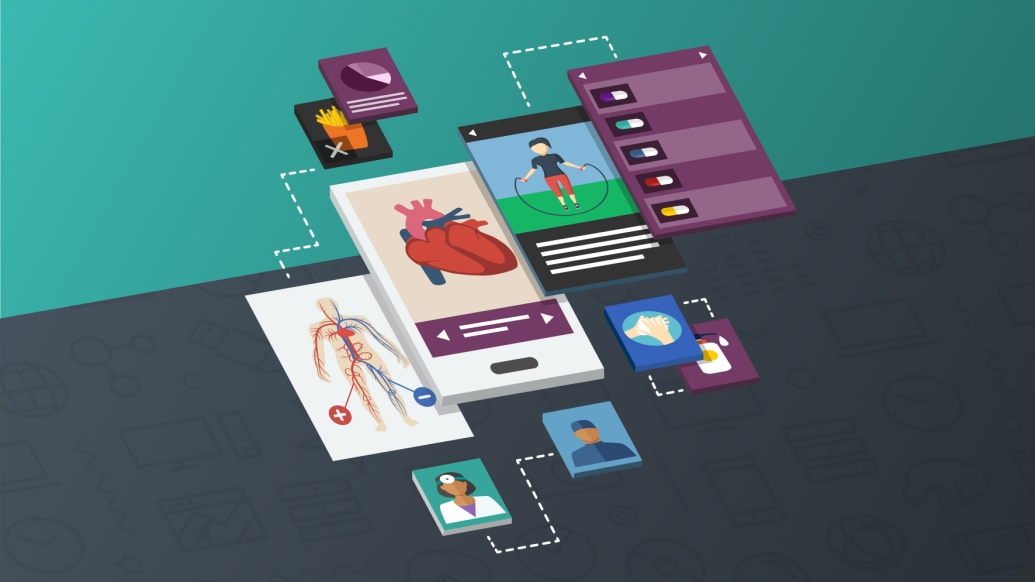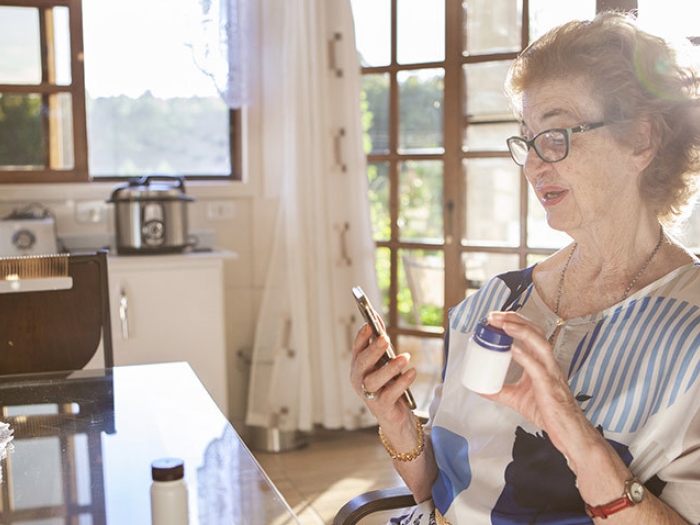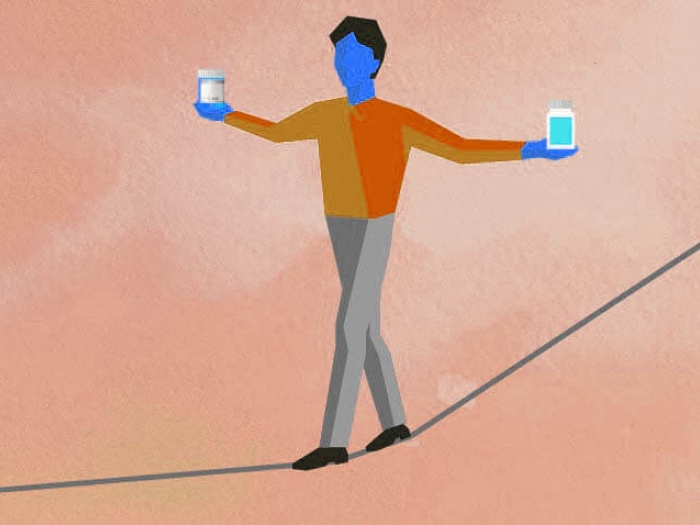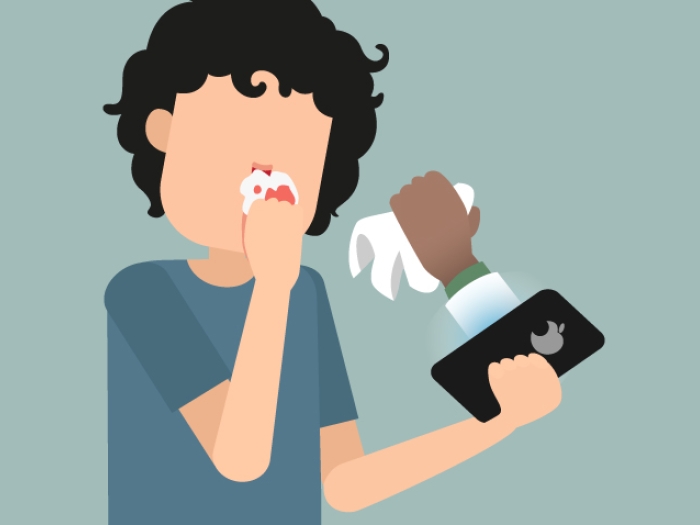A new study finds a majority of health-related mobile apps fall short of helping those who most need smart solutions to manage their health.
7:00 AM
Author |

The smartphones nearly all Americans carry could transform how people manage their health, especially the tens of millions who have chronic conditions or complex health needs.
MORE FROM THE LAB: Subscribe to our weekly newsletter
But a new study suggests that app makers aren't adequately serving those who could most benefit from mobile health, or mHealth, apps.
A team led by a University of Michigan Medical School mobile health researcher, and including colleagues at Brigham and Women's Hospital, published these findings in the new issue of Health Affairs.
They're based on a comprehensive review of 137 of the most highly rated or often recommended mHealth apps in the Apple and Google app stores aimed at people with chronic conditions. Such people have high health costs and often social or economic barriers to health care, which can be complicated by lower income or level of health knowledge.
The researchers found that even the "best" apps for these patients fell short. Their key takeaways:
-
People with some conditions, such as diabetes and depression, can find a wide range of highly rated apps. But those with other conditions, such as arthritis or pain, will find few options when they search for high-quality apps.
-
App store ratings, supplied by users, aren't always a reliable guide, even with highly rated apps. The researchers found that physicians and nonphysicians on their evaluation team often rated apps much higher or lower than the app store ratings, based on how usable or useful they found the apps to be for actual patients.
-
Nearly all the apps (121) let people enter information into their phones about their health that day, such as a daily blood sugar or blood pressure level or whether they were feeling suicidal. But only 28 of these apps reacted appropriately when the reviewers entered a dangerous value — a blood pressure that was sky-high, a super-low blood sugar level or a suicidal mood, for instance.
-
The results were somewhat better for apps aimed at certain populations: Half of the apps aimed at people with asthma or stroke, and half of the few targeted to elderly people, responded appropriately when users entered dangerous values.
-
Many apps offered tracking functions, education, reminders and alerts that could be useful to a high-need, high-cost population. But few provided tailored guidance based on what the user actually entered into the tracking interface, or offered ongoing engagement that rewarded healthy inputs.
-
Most of the apps allow users to share their health information with others, but the researchers found that often this was through unsecured methods. Half the apps allowed sharing by email, and 17 percent allowed text message sharing. The apps were tested in 2015, after the launch of Apple and Google options for secure sharing of health information, but only a minority allowed this kind of sharing. And only one allowed users to share data directly into the electronic health record that their medical team uses.
-
Only two-thirds of the apps had a written privacy policy spelling out how they protect or use the information supplied by users. This is better than previous studies of all mHealth apps have found, but still troubling to the researchers because the apps in this study were supposed to be top-notch.
"Clearly there is a large-scale proliferation of apps happening related to health, and people have made the switch over to smartphones," says first author Karandeep Singh, M.D., M.M.Sc., an assistant professor of learning health sciences at U-M. "But the question is, to what extent are apps serving the needs of patients with chronic diseases and their caregivers, as opposed to generally healthy people seeking help with wellness?"
He adds, "We found that the consumer-generated rating on the app store is a very poor marker of how usable an app is, and whether a physician would recommend it. Clearly, the work is not done once consumers have rated an app. Going forward, we need to evaluate apps on the basis of what would it take for physicians, and organizations that issue clinical guidelines, to start recommending them to patients."
We need to think about care models that allow information to be acted on in real time, so that a blood pressure of 250 uploaded at 3 a.m. gets prompt attention.Karandeep Singh, M.D., M.M.Sc.
Addressing patient needs
Singh and senior author David W. Bates, M.D., M.Sc., the chief innovation officer at Brigham and Women's Hospital, conducted the study with funding from The Commonwealth Fund. The work grew out of previous investigations by the Robert Wood Johnson Foundation and the National Academy of Medicine on mHealth and its implications for the patient population that uses the most health care and accounts for a huge percentage of national health care costs.
The team evaluated apps aimed at people with asthma, arthritis, diabetes, high blood pressure, depression, lung disease, liver disease, kidney disease, heart failure and addiction to drugs, alcohol or tobacco. The researchers also looked at apps for people who have survived a stroke, have battled cancer, have been diagnosed with memory loss or dementia, are obese or are living with pain.
These "high-need, high-cost" patients have been seen as a key group for mHealth options. Smartphone ownership has risen to two-thirds of the American population, including a growing percentage of elderly and low-income people, who are more likely to have health problems.
App makers have tried to fulfill this need, producing more than 165,000 mHealth applications. Many aim to help people track their conditions day to day, stay on track with medication or at-home testing, share information electronically with their care teams and get education and encouragement between doctor's appointments.
Theoretically, this could help avoid emergencies and long-term problems — and reduce the high cost of care.
Needed updates
App developers should do better at alerting users about dangerous conditions and giving them a course of action, such as calling for help if they're feeling suicidal or alerting their key contacts if their blood sugar is dangerously low and they're at risk of passing out, researchers say.
"Do we really want our mHealth apps to be passive observers, or should we expect that they do more than that, and model themselves after crisis hotlines that have specific action plans?" Singh says.
The lack of direct advice to the user may have something to do with how mHealth apps are regulated, Singh and his colleagues note.
Apps are regulated by the Federal Trade Commission, which can respond to misleading claims, the Office for Civil Rights of the Department of Health and Human Services, which oversees compliance with health privacy laws, and the Food and Drug Administration, which can require app makers to remove their apps from the app store but does not have to review most mHealth apps before they're made available.
App makers aren't typically subject to HIPPA, but secure sharing of health data is important for patients' privacy nonetheless, Singh says.
For clinicians
Clinicians also need to adapt their thinking to the new age of mHealth apps that their patients are probably using, Singh says.
SEE ALSO: Reducing Birth Defects? There's an App for That
"Clinicians still think of apps the way they think of pen and paper — a patient enters information that they need to track, and then communicate it to their health providers on the phone or when they have an appointment. But if the information logged in an app is important, it should get dealt with right away."
Health systems and clinics that use electronic health record systems that are capable of receiving information from mHealth apps could change their care models if they elect to allow patients to upload their data from their smartphones.
"We need to think about care models that allow information to be acted on in real time, so that a blood pressure of 250 uploaded at 3 a.m. gets prompt attention," Singh says.
Foundations and medical professional organizations also need to look at the app stores' offerings for patients who have conditions they're concerned with, the authors say.
In the meantime, people with chronic conditions or complex health needs should talk with their health providers about any apps they recommend, and look for those with functional features.

Explore a variety of health care news & stories by visiting the Health Lab home page for more articles.

Department of Communication at Michigan Medicine
Want top health & research news weekly? Sign up for Health Lab’s newsletters today!




